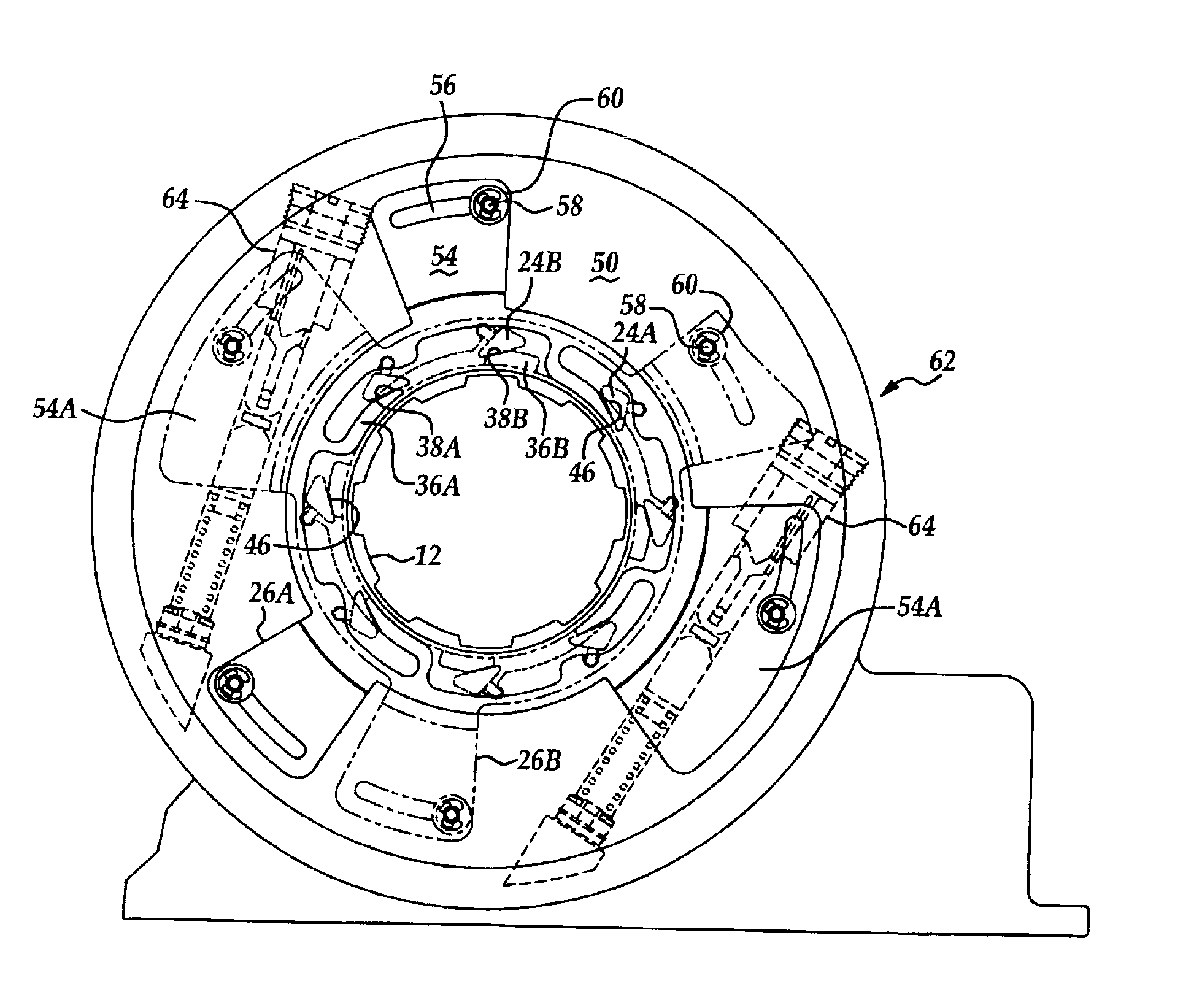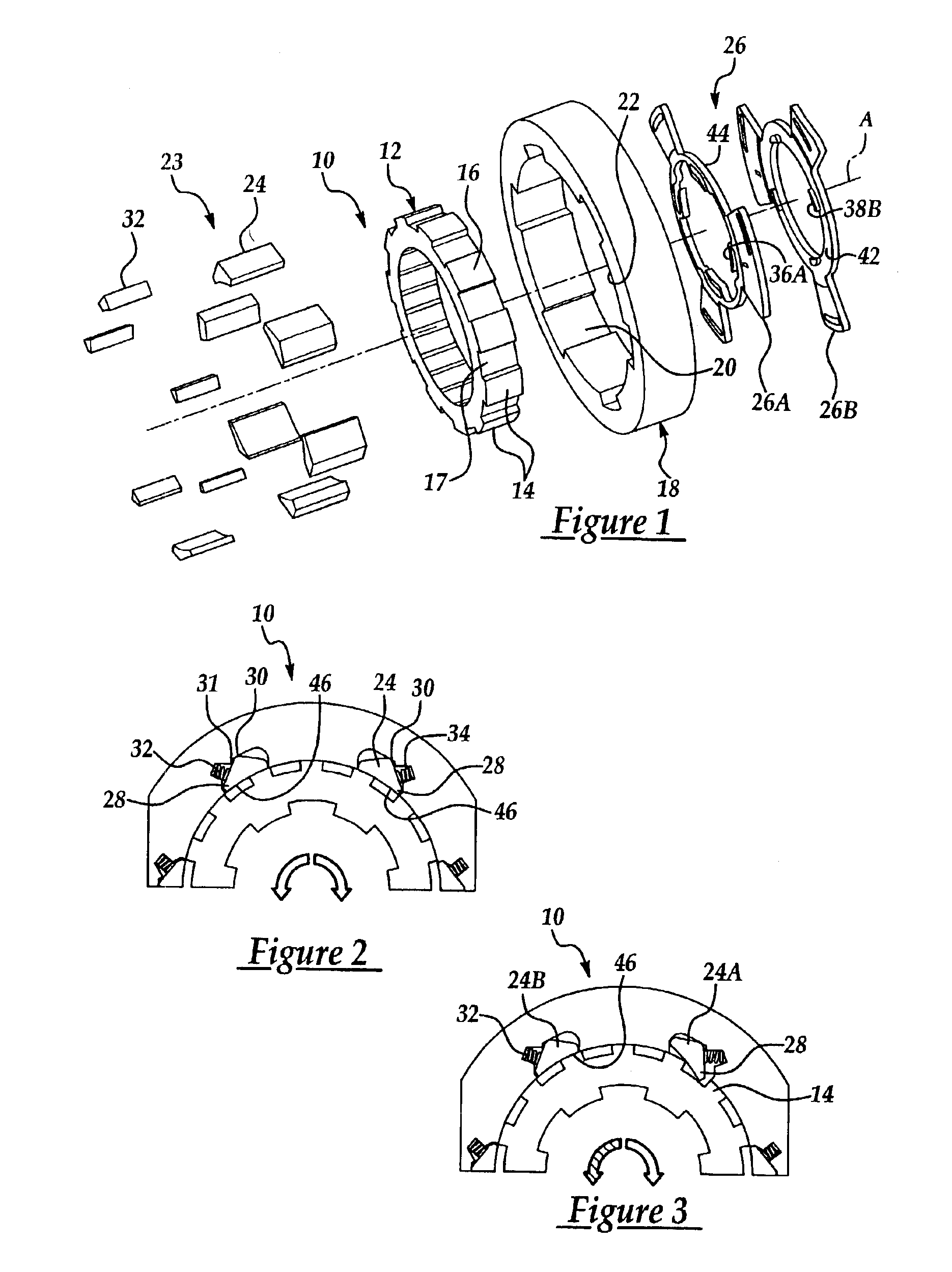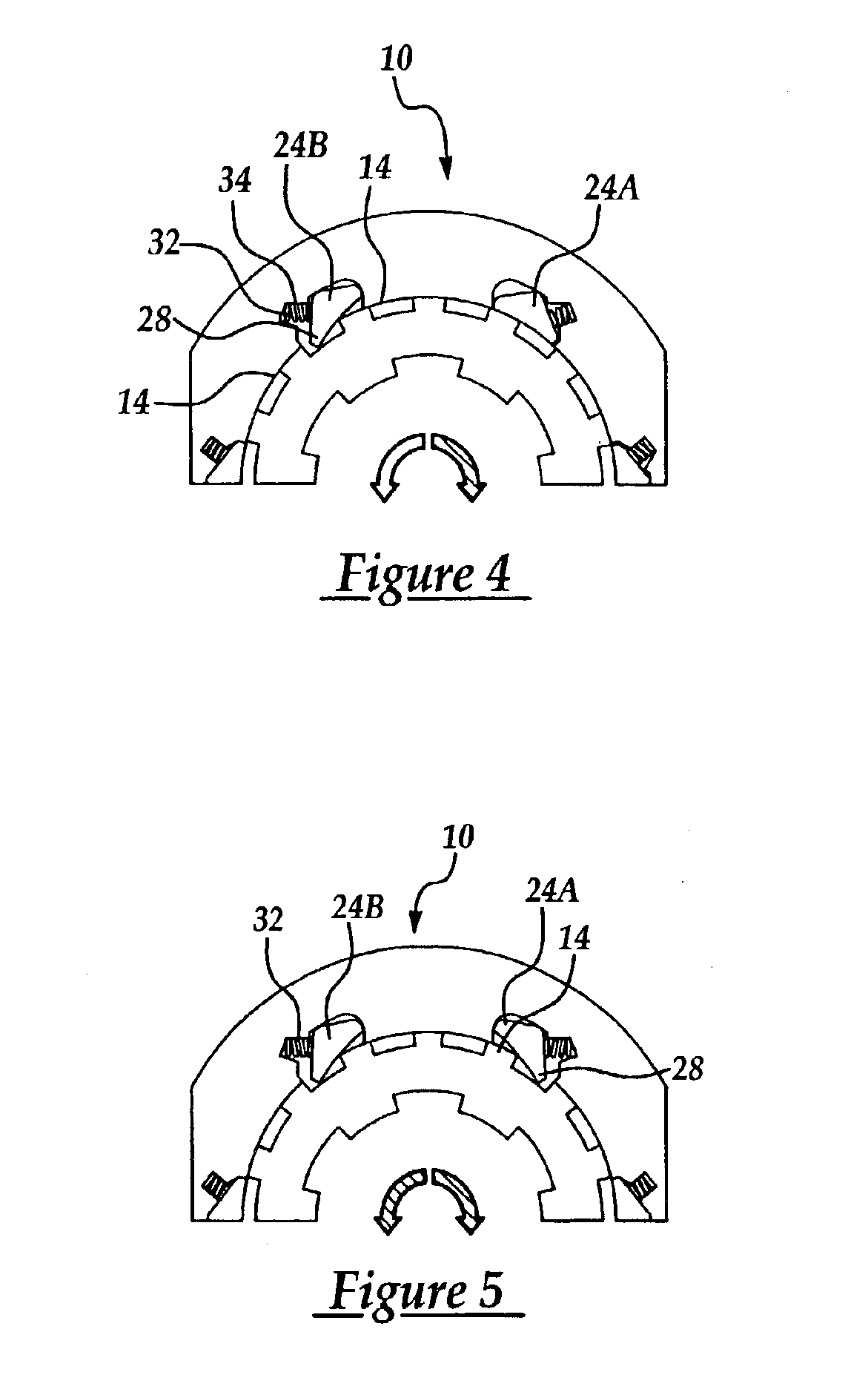Bi-directional clutch having a momentary latching actuator
a momentary latching actuator and clutch technology, applied in the direction of clutches, non-mechanical actuator clutches, freewheel clutches, etc., can solve the problems of parasitic energy loss, drag, and relative rotation between the friction discs and the plates during open-pack mode, and achieve energy saving, great energy conservation, and increase efficiency
- Summary
- Abstract
- Description
- Claims
- Application Information
AI Technical Summary
Benefits of technology
Problems solved by technology
Method used
Image
Examples
Embodiment Construction
)
[0030]A bi-directional clutch assembly of the present invention having a latching actuator is generally indicated at 10 in the figures, where like numerals are used to designate like structure throughout the drawings. In the preferred embodiment illustrated herein, the clutch assembly 10 is operative in four different modes and is particularly adapted for use as a component of drivelines of land-based vehicles, such as in transmissions, transfer cases, differentials and the like. Accordingly, one application for the clutch assembly 10 of this particular type (i.e., having four operational modes) is for use in a motor vehicle transmission. However, those having ordinary skill in the art will appreciate that the clutch assembly 10 of the present invention may be employed in numerous applications, whether or not the application takes advantage of all four operational modes of the clutch assembly as discussed below.
[0031]Referring now to FIG. 1, the clutch assembly 10 of the present in...
PUM
 Login to View More
Login to View More Abstract
Description
Claims
Application Information
 Login to View More
Login to View More - R&D
- Intellectual Property
- Life Sciences
- Materials
- Tech Scout
- Unparalleled Data Quality
- Higher Quality Content
- 60% Fewer Hallucinations
Browse by: Latest US Patents, China's latest patents, Technical Efficacy Thesaurus, Application Domain, Technology Topic, Popular Technical Reports.
© 2025 PatSnap. All rights reserved.Legal|Privacy policy|Modern Slavery Act Transparency Statement|Sitemap|About US| Contact US: help@patsnap.com



